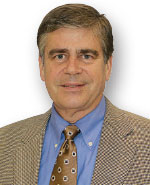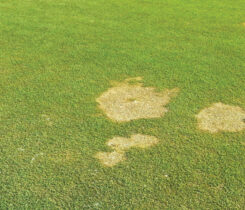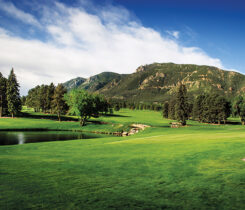A call to duty: USGA Green Section a blessing for the golf industry
 In 1920, Inverness Country Club, Toledo, Ohio, played host to the U.S. Open. At the time, the greens chairman complained about — or maybe brought to light — the lack of an impartial source of agronomic information for maintaining a golf course. Later that year, the USGA founded its Green Section. Since then, the USGA has funded more than $40 million in research grants to improve golf course turf.
In 1920, Inverness Country Club, Toledo, Ohio, played host to the U.S. Open. At the time, the greens chairman complained about — or maybe brought to light — the lack of an impartial source of agronomic information for maintaining a golf course. Later that year, the USGA founded its Green Section. Since then, the USGA has funded more than $40 million in research grants to improve golf course turf.
In 1953, the Green Section implemented its on-course agronomic consulting service. Fred Grau, Alexander Radko, Marvin Ferguson, Ph.D., James Moncrief and William Bengeyfield are just a few of the names associated with the first generation of Green Section agronomists. I’m fortunate enough to have met many of these legends.
The USGA agronomists that I consider my contemporaries include Jim Snow, Stan Zontek, Pat O’Brien, David Oatis, Bob Brame, Bob Vavrek, Larry Gilhuly, Michael Kenna and James Moore, just to name a few. These individuals share the USGA Green Section commitment to providing golf clubs and superintendents with an informed opinion based on unbiased research.
Twenty-some years ago I was at a meeting in Scotland where Jim Snow was speaking to greenkeepers. At that time, the attitude toward American golf course management among this audience was not good. The view was that golf maintenance should follow the philosophy of links-style golf. Jim was being aggressively challenged on how American courses were being managed. Jim’s ability to clearly state how and why American golf courses are what they are was something to behold. Jim exhibited the personal qualities expected of a USGA agronomist.
What are those personal qualities? How can I describe them?
The last week of October, USGA agronomist Keith Happ passed away at much too young an age. I bring Keith up not because he was a good friend — which he was — or because he was a former student — which he was. I bring him up because he represented the characteristics and qualities that make a good USGA agronomist.
Keith had been a superintendent in the Cleveland area before attending The Ohio State University. He had achieved CGCS status and served on several local and national boards. By any measure, Keith was a successful superintendent.
However, with the encouragement of his wife, Keith gave up all that to pursue a college degree. He moved to Columbus with his wife and 18- month-old son. His class load was grueling. His schedule exceeded 30 credit hours a quarter. Even with a schedule like this, he found time to be a husband and father, work 40 hours a week and mentor students. Keith was a leader among students, even if they weren’t turfgrass majors. He counseled them about résumés, interview preparation, what to look for in jobs and almost anything else that a college student worries about.
Keith graduated in six quarters — 18 months — which was something unheard of, with a GPA of 3.97 out of 4.0. He was one of only four students recognized at spring commencement by the university’s president for outstanding undergraduate accomplishments. Upon graduation, Keith applied for an agronomist position with the USGA, which is the reason I believe he came back to school. Keith finished second. Keith had told me that if the interview didn’t work out he would accept my offer to graduate school.
A few months after starting graduate school, Keith told me that Jim Snow and Stan Zontek had called and offered him a USGA position, but he was going to turn it down. I asked him why, given being a USGA agronomist was his dream job. “I promised you I would complete this project,” he said.
I told Keith to take the position.
Keith represented the qualities found in a USGA agronomist — intelligence, dedication, focus, honesty and a sense of duty. As the holiday season approaches and we count our blessings, one of those blessings for the golf industry is the USGA Green Section.










